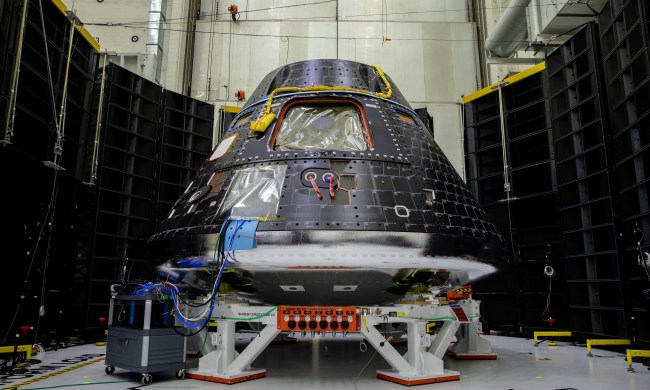NASA is planning its first robotic explorers to Venus in over 30 years, with the announcement this summer of the DAVINCI+ and VERITAS missions. Now, NASA has shown what one of those missions will be facing with the release of a video visualization of the DAVINCI probe plunging through the Venusian atmosphere.
Set to launch in 2029, DAVINCI will investigate the origin and development of Venus and why it diverged from Earth. It will begin its mission with two gravity assist flybys of the planet, during which it will study the tops of Venus’s thick clouds and look at the heat which emanates from the side of the planet facing away from the sun.

With two flybys completed, the craft will release its atmospheric descent probe which will drop through the atmosphere, collecting data and taking pictures as it goes. The atmosphere of Venus is an inhospitable place, with high temperatures, crushing pressures, and clouds of sulfuric acid to contend with, so the probe will measure all of these factors plus others like winds and atmospheric composition. Learning more about the composition of the atmosphere can help researchers learn about Venus’s history, and perhaps even find evidence of ancient water.
As the probe approaches the surface it will capture images of a region called the Alpha Regio tessera, snapping pictures of the rock formations to find out what they are made of and whether water once flowed across the planet’s surface. All of this may be able to tell us whether Venus was ever habitable.
“Venus is a ‘Rosetta stone’ for reading the record books of climate change, the evolution of habitability, and what happens when a planet loses a long period of surface oceans,” said James Garvin, principal investigator for DAVINCI+ at NASA’s Goddard Space Flight Center, when the mission was first announced. “But Venus is ‘hard’ since every clue is hidden behind the curtain of a massive opaque atmosphere with inhospitable conditions for surface exploration, so we have to be clever and bring our best ‘tools of science’ to Venus in innovative ways with missions like DAVINCI+.
“That is why we named our mission ‘DAVINCI+’ after Leonardo da Vinci’s inspired and visionary Renaissance thinking that went beyond science to connect to engineering, technology, and even art.”



